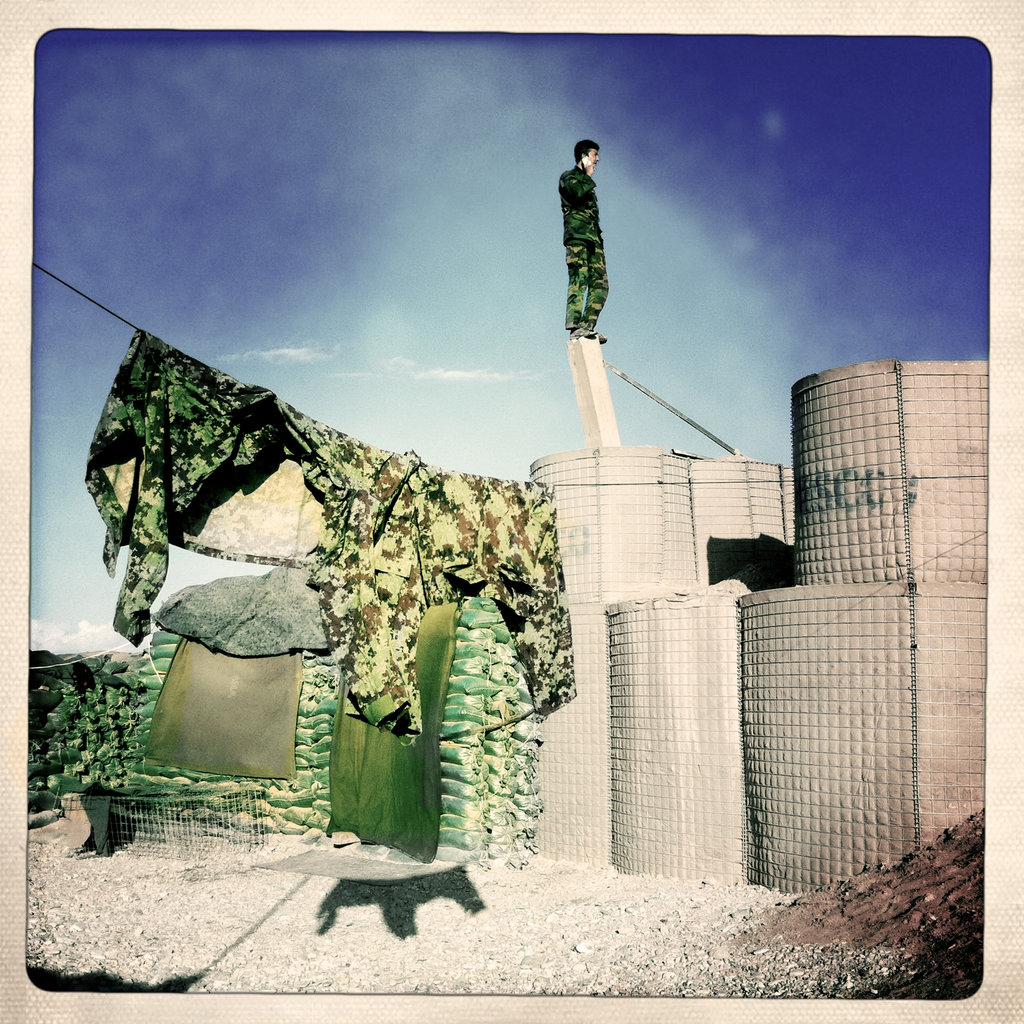 Rita Leistner, Easy target, 2011, digital c-print © Rita Leistner / Basetrack
Rita Leistner, Easy target, 2011, digital c-print © Rita Leistner / Basetrack
When Toronto-based photojournalist and war photographer Rita Leistner embarked on a military embed in the Hemland province of Afghanistan in 2010, she brought with her an iPhone – one of the first of its kind. She wanted to experience the perils of war in Afghanistan first-hand, and perhaps most crucially, to understand the twenty-first century need to be part of a ‘digital tribe’. She went to Afghanistan as a member of the experimental social media initiative, Basetrack. During her time overseas, Leistner adapted to taking photographs with smartphone alone. She produced images of breathtaking mountainous landscapes flanked by military camps and impactful reminders of the Taliban’s presence in the form of barren villages and handwritten signs of caution. The rapid editing of these photographs with the super-heightened Hipstamatic application and ensuing posting to twitter for all the world to see, left Leistner dissatisfied with the ephemeral nature of the project, finding herself desperately craving the “process” traditionally associated with developing photographs.
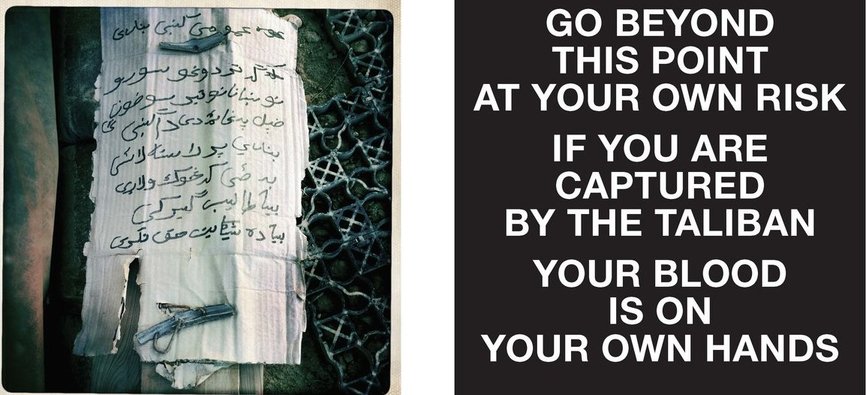 Rita Leistner, Proceed at your own risk, 2011, digital c-print text panel © Rita Leistner / Basetrack
Rita Leistner, Proceed at your own risk, 2011, digital c-print text panel © Rita Leistner / Basetrack
And so process she did. Her current exhibit Looking for Marshall McLuhan in Afghanistan, is a convergence of old and new technologies, effectively working to preserve the visual history of mankind. With the help of printer-extraordinaire Bob Carnie, thirty of Leistner’s original smartphone photographs are made tangible and permanent through a nineteenth century palladium printing technique with applied tri-colour gum bichromate. Panels depicting the palladium printing process are also included in the exhibition. These prints are the first of their kind, having the capacity to survive as many as twenty generations. For centuries to come they will continue to serve as some of the artefacts of the war in Afghanistan. Leistner explains how all technology, when pushed to its extreme, reverts to old technology. While the Hipstamatic application is merely an algorithm referencing traditional photography through its retro and antique filters, Leistner and Carnie’s prints offer spectators an authentic and tangible sense of nostalgia.
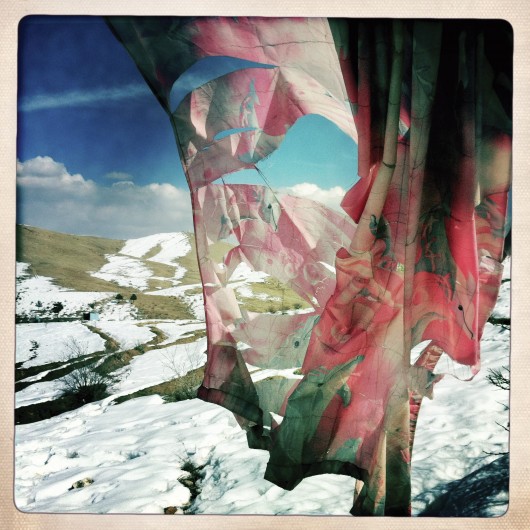 Rita Leistner, Afghanistan, 2011, digital c-print © Rita Leistner / Basetrack
Rita Leistner, Afghanistan, 2011, digital c-print © Rita Leistner / Basetrack
What I find to be most striking about the collection of prints is the unique interplay between the technology and the war they portray. Marshall McLuhan is known to have said, “Every new technology necessitates a new war,” and when one experiences Leistner’s series of photographs it becomes evident that the smartphone has itself become a piece of military technology. There is a remarkable element of honesty in her works which points out all parties’ uncertainty around working within this new technological context. The military’s hesitancy, for example, to allow journalists to instantaneously post images on social media sites is coupled with Leistner’s unfamiliarity with the iPhone’s amateur camera. Moreover, the subjects captured in a number of her works are required to learn how to engage with this new military equipment. The photograph depicting two American marines alongside two Afghan National Army soldiers exemplifies the different relationships that are to be had with the smartphone. While the Afghan soldiers deliberately pose square to the picture’s frame, signifying an absolute awareness of the technology, the American marines turn away so as to appear nonchalant, but are, in effect, posing nonetheless.
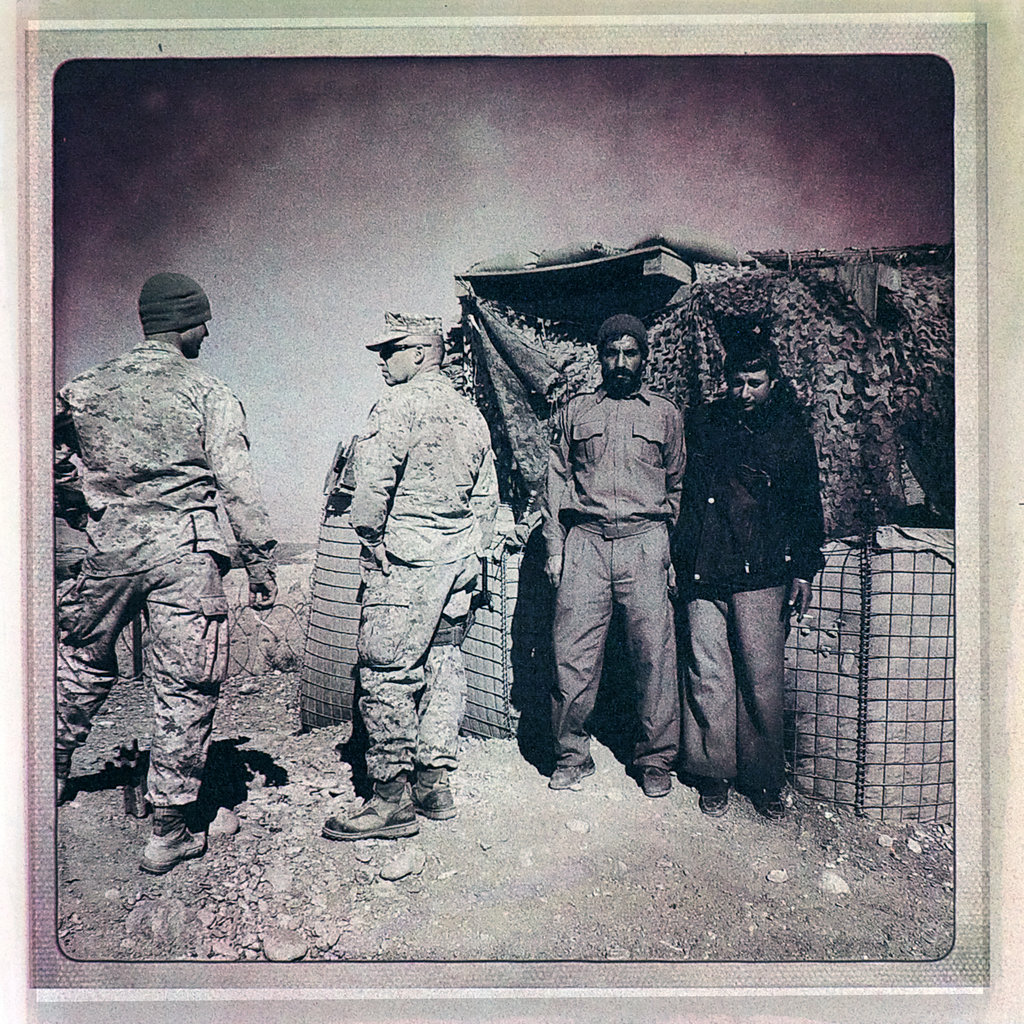 Rita Leistner, Different ways of posing for the camera, 2011, palladium print © Rita Leistner / Basetrack
Rita Leistner, Different ways of posing for the camera, 2011, palladium print © Rita Leistner / Basetrack
And while one could argue that the evolution of technology has only hindered the possibility of authentic human connection, that posting to twitter images of makeshift petrol stations on the Afghan roadside only serves to, what Leistner calls, “Feed the beast,” the photographic series reveals an unexpected exchange between the Afghan and the American. Photographs taken from inside a mud spattered military vehicle accurately capture the conventional American perception of war and those who live among it. Amidst the dirt, two young Afghan children, eyes full of curiosity, peer into the windows of an equally unkempt perception of America. Such an image reveals how very little difference there is between people, that although the outlook of both sides has been tainted by the failed war in Afghanistan, beauty persists — here, in the inextinguishable spirit of childhood. Leistner’s collection demonstrates that human connection ultimately prevails, even in our high-tech world.
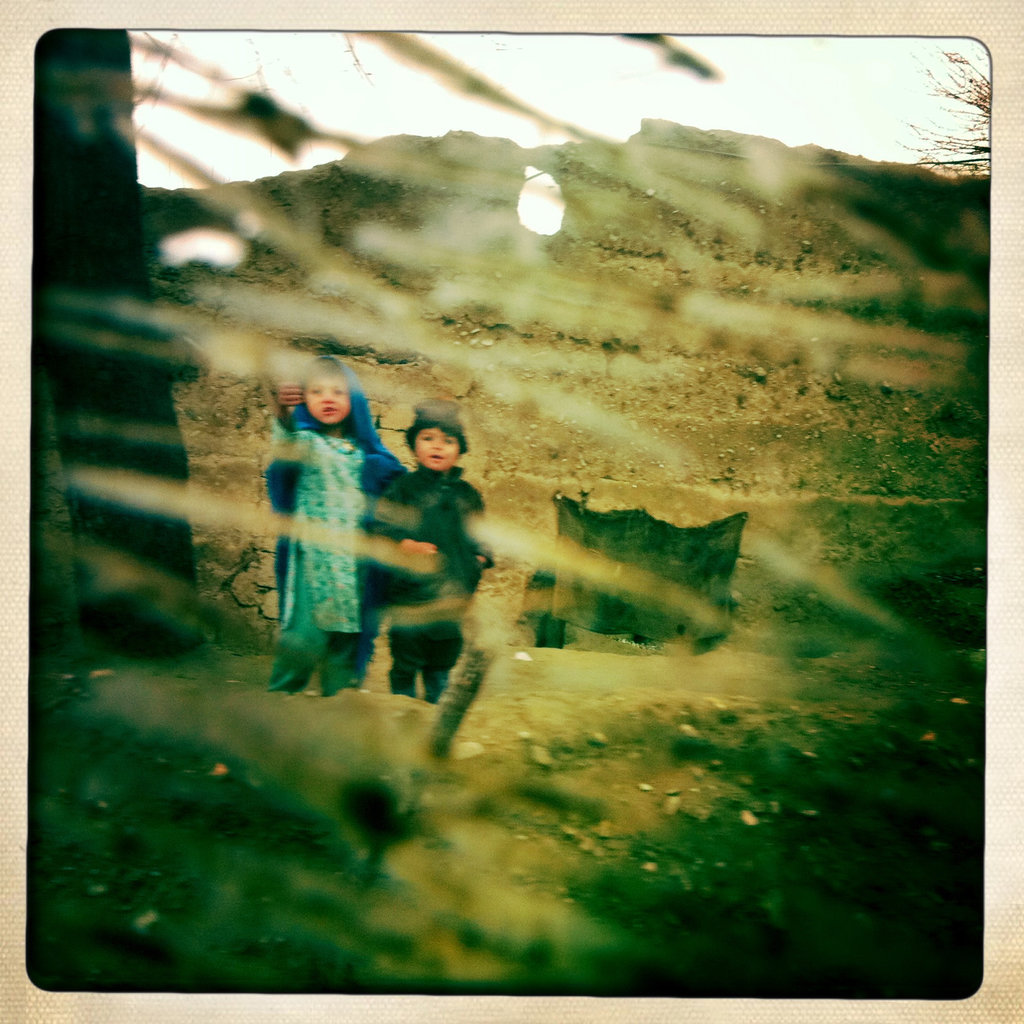 Rita Leistner, Through the windows of an armored vehicle, 2011, digital c-print © Rita Leistner / Basetrack
Rita Leistner, Through the windows of an armored vehicle, 2011, digital c-print © Rita Leistner / Basetrack
Vanessa Zeoli
*Exhibition information: Looking for Marshall McLuhan in Afghanistan by Rita Leistner, April 15 – May 13, 2015, Dylan Ellis Gallery, 1840 Danforth Ave, Toronto. Gallery hours: Mon – Fri 9 – 5, Sat – Sun 10 – 4 p.m. “Talk Redux”, Rita Leistner will give a final talk on May 12, 6:30 p.m.
